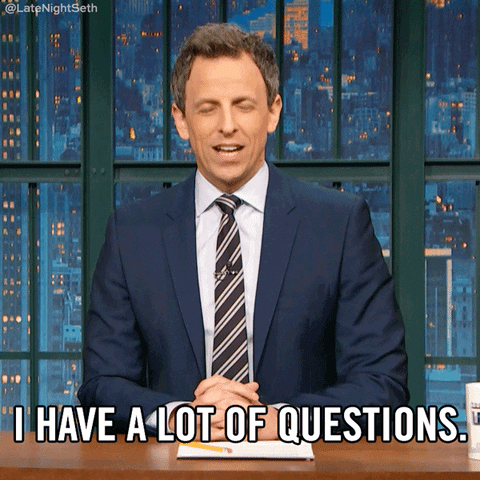Part of being a manager is recognizing the top performers on your team—and doing everything you can to make sure they stay on your team. But sometimes, that just isn’t possible—and you find yourself saying goodbye to an important team member.
The departure of a key team member, whether it’s because they quit your organization or they’re going on an extended leave, can be challenging to navigate. How do you break the news to your team? How do you pick up the slack and ensure the departure doesn’t cause a dip in productivity? And what should you do to support your remaining employees—and make sure the employee’s exit doesn’t have a negative impact on your team?
Communicate The Departure To Your Remaining Employees
As a manager, you’re the first (or at least one of the first) to know that an important team member is leaving the team, whether permanently (in the case of the employee quitting) or temporarily (in the case of an employee going on leave). And that means the responsibility for sharing that news with the rest of the team falls on your shoulders.
The key to communicating an employee departure to your remaining team members? Being as open and honest as the situation allows.
“Effectively dealing with…[the departure of a key team member] means being as transparent as possible,” says Michele Bailey, founder and CEO of brand and culture agency The Blazing Group, business speaker, and author of The Currency of Gratitude: Turning Small Gestures Into Powerful Business Results. “While considering privacy, sharing as much as you are able about the departure is important.”
If your employee is going on leave, this process is more straightforward; you can let your remaining team know that the employee is taking a leave of absence but will be returning to the organization at a later date. And, depending on the situation, you may or may not share why they’re taking leave. For example, if your employee is heading out on maternity leave, typically, you can share that with your team. But if an employee is taking leave to deal with a medical diagnosis, that’s information you need to keep to yourself—and let the departing employee decide if and when to share details with their co-workers.
If an employee quit, the situation can be a bit more complicated. You can let your remaining team know that the employee will no longer be working with the organization—but as a manager, it’s not your place to share the employees’ reasons for quitting.
The one exception to that rule? If the departing employee left because of an organizational issue—and your remaining employees are well aware of said issue—“it’s key to acknowledge the issue and address how that issue will be solved,” says Bailey. For example, if your employee quit after a very public argument with a member of your leadership team, you need to address the issue with your team–and what you’re doing to avoid a similar issue in the future.
Just keep in mind that “it helps to acknowledge…challenging circumstances, but not to rehash them,” says business and leadership coach Michael O’Brien. “Instead, a manager should focus on how this situation can help everyone grow and move forward.” So, using the aforementioned example, you can let your team know that, in response to the situation, your organization is going to be investing in a more robust conflict resolution training program. That way, your team knows that your leadership team recognizes the problem and how it led to the employee leaving—and they don’t have to be concerned about a similar conflict impacting them in the future.
How you share the news with your team is also extremely important. “It’s…important to be as personal as you can,” says Bailey. “Company-wide memos are often impersonal and cold—and [often] create more questions than they answer. Face-to-face, even if it is virtual, is the…best way to convey [this type of] news.”
Carve Out Time To Answer Questions
Once you’ve looped your team into the fact that their co-worker is leaving, one thing you should definitely expect? A lot of questions—and, as a manager, it’s important to carve out time and space to address those questions.

“The most common question managers will be asked about a departure is ‘why?,’” says Bailey.
And that makes sense. Employees will naturally be curious about why such an important member of their team is leaving—and, as a manager, it’s important that you give them an honest answer, “[as] uncertainty over the reason for the departure could lead to rumors and fears that could impact morale, engagement, and productivity,” says Bailey.
Once your employees have a clearer understanding of why the employee is leaving the team, their next questions will likely focus on how the departure will impact them, their workload, and the rest of the team. More specifically, “the most common questions will be around workload, expectations, and when the manager will begin interviewing to fill the position,” says O’Brien.
When talking through these questions with your team, it’s important to address any “concern or worry employees will have regarding their own workload,” says Bailey. Your employees may be feeling stressed that the employee’s departure will translate into a more stressful work experience for them and the rest of the team—so, at this point, it’s your job to reassure them.
Even if you don’t have concrete answers to all your team’s questions about the departing employee—and how that departure is going to impact them—taking the time to address their concerns can provide the reassurance they need to keep moving forward.
Come Up With A Game Plan
You’ve let your team know their co-worker is leaving the team (whether that’s permanently or temporarily). You’ve taken the time to address their initial questions and concerns.
Now, it’s time to come up with a game plan. And the best way to do that? Co-creating the plan with your team.

“Rather than…create your plan in a silo, engage employees from the start and listen to their concerns and suggestions,” says Bailey. “If they have been part of the solution, they will be more motivated to see the transition plan through successfully.”
Schedule a meeting with your employees to dig into what the departing employee was working on, how that fits into your overall team workflow, and how you can redistribute the departing employee’s work in a way that makes sense for the project and the rest of the team.
“When someone leaves, it may be valuable to temporarily cut or pause some initiatives and engage the team members in redistributing the work,” says O’Brien. “Ultimately, the leader has to make the final decision—but working with the team helps them shape the path forward and improves engagement.”
Continue To Check In With Your Remaining Employees
Your plan will give your team a clear direction of how to move forward without your departing employee. But having a plan and a direction doesn’t minimize the potential impact the departure may continue to have on your team.
For example, when an important team member quits, it could cause retention issues with your remaining employees. “When a key team member leaves, it can make others wonder if they should leave as well,” says O’Brien. “In essence, it shows the remaining team members that there are possibilities out there.”
The departure could also lead to remaining team members feeling overwhelmed, disengaged, or upset (particularly if the employee that left was someone they considered a friend).
That’s why at this stage of the game, it’s so important to continue to check in with your remaining employees to see how everyone’s doing—and see if there’s anything you can do to support them through the transition.
In the weeks following a key team member’s exit, make sure you’re scheduling regular meetings to check-in with your team. Ask them how they’re doing, how they think the team is doing, and if there’s anything they need to be successful as the team navigates the transition. These regular check-ins will help you stay on top of any issues with morale, productivity, or engagement—and will allow you to address them before they become bigger issues that drag down the team.
For example, let’s say that during a check-in you discover that a number of your remaining employees feel like the team is less cohesive after losing such an important member of the group. In that case, you might schedule more team-building events. Or, let’s say you find out that your remaining employees are struggling to keep up with the additional responsibilities thrown their way in the wake of the departing employee’s exit. In that case, you’d want to make finding a replacement a priority—and let your team know you’ll be decreasing their workload ASAP.
The point is, an important employee’s departure can negatively impact the team long after the initial exit. As a manager, it’s your job to continue to check in with your team, address any issues related to the departure, and make sure they have everything they need to successfully move forward.
Use These Tips To Maintain Morale After An Important Employee Departure
Losing an important team member is never easy. But now that you know what to do if a key employee quits or goes on leave, you have everything you need to navigate the situation—and make sure your team emerges from the experience stronger than ever.








































